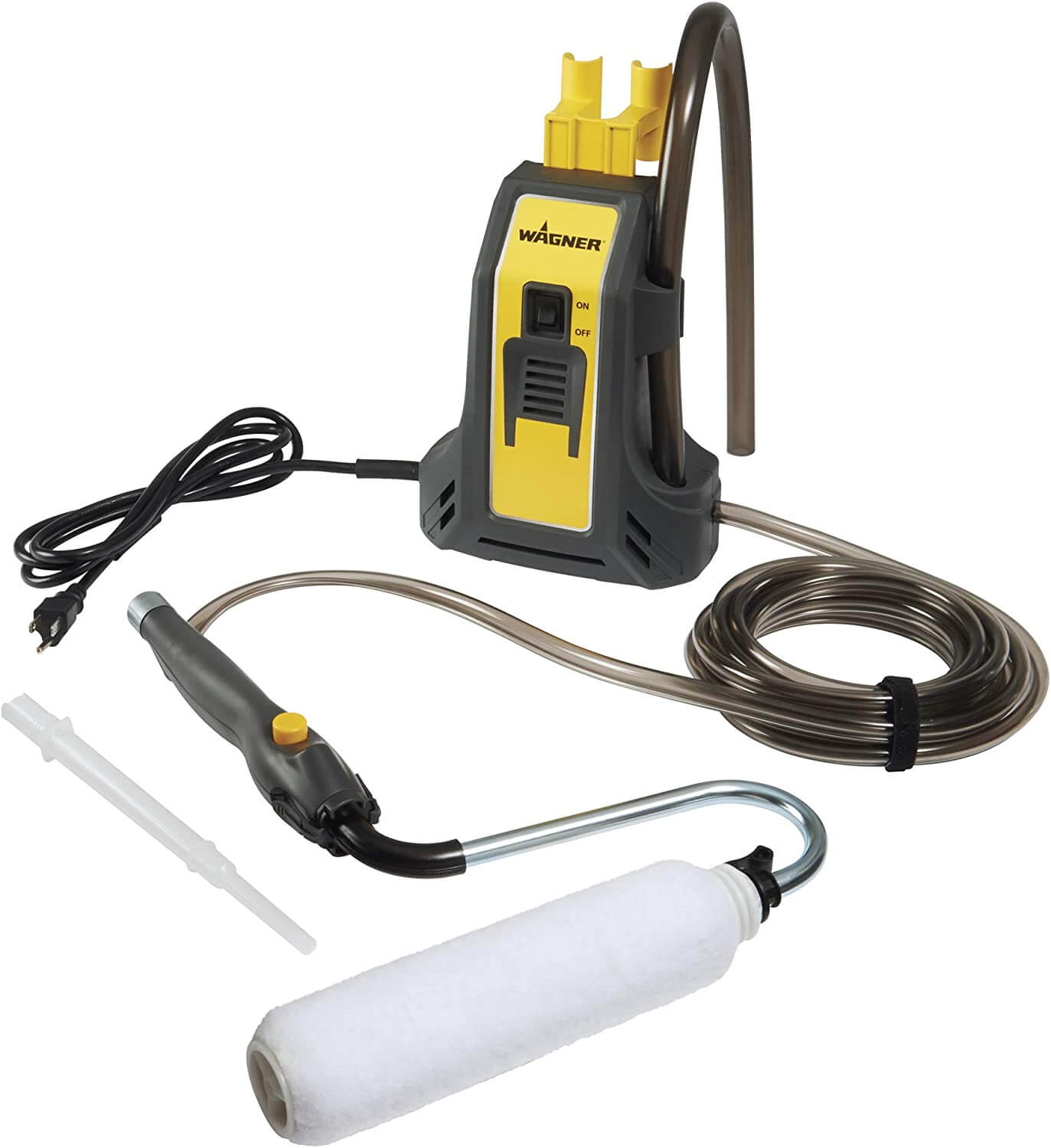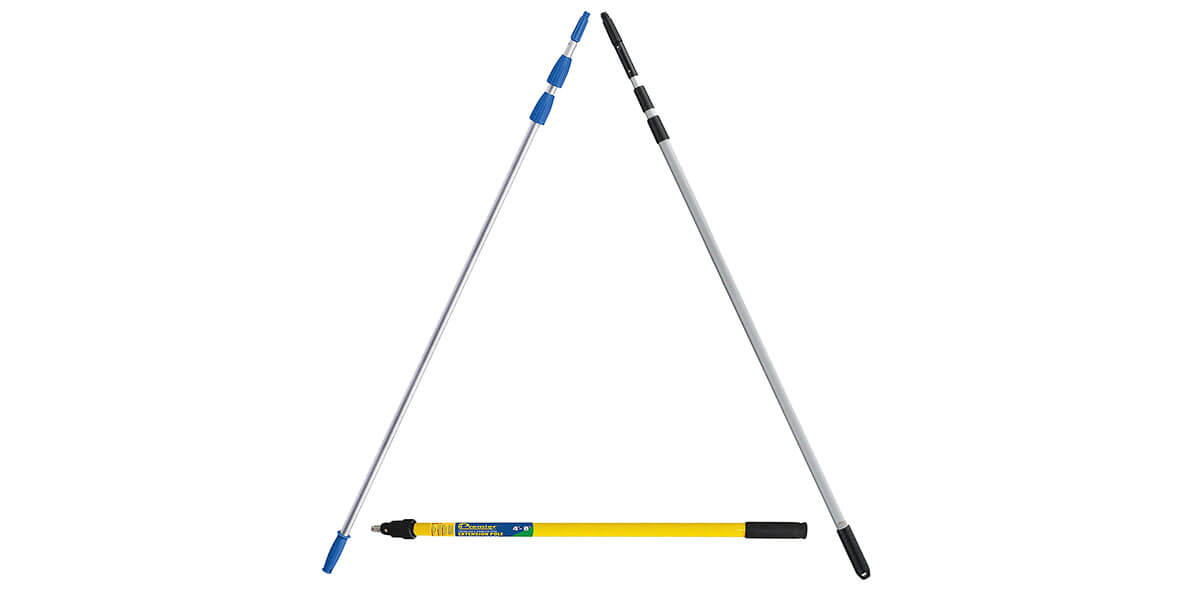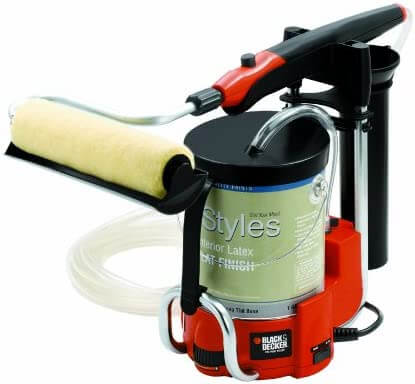What is a Power Paint Roller?
 A power paint roller is a motorized roller that automatically feeds paint onto its roller cover and applies it to the surface being painted. It is designed to make painting large areas faster and easier. The roller cover spins rapidly and distributes the paint evenly over the surface.
A power paint roller is a motorized roller that automatically feeds paint onto its roller cover and applies it to the surface being painted. It is designed to make painting large areas faster and easier. The roller cover spins rapidly and distributes the paint evenly over the surface.
One of the main advantages of using a power roller is that it can save a lot of time and effort compared to traditional paint rollers. It can also produce a more uniform finish with fewer streaks and inconsistencies as the roller cover rotates evenly and continuously.
power rollers are typically used for painting large, flat surfaces such as walls, ceilings, and floors. They are often used by professional painters but can also be useful for DIY painting projects.
Table of Contents
Two types of Power paint rollers
power rollers are available in both corded and cordless versions. The corded versions need to be plugged into an electrical outlet, while the cordless versions run on a rechargeable battery.
Battery-powered
A battery-powered power roller is a type of power roller that is powered by a rechargeable battery instead of being tethered to an electrical outlet. This allows for greater portability and flexibility, as the user can move around freely without being restricted by the length of an electrical cord.
The battery is typically housed in the roller handle or as a separate battery pack that can be clipped onto the user’s belt or clothing. The battery provides the power to run the motor that drives the paint feed mechanism, allowing for continuous paint delivery without requiring frequent refilling.
Battery-powered power rollers are especially useful for outdoor painting projects or for painting in areas where access to electrical outlets is limited or unavailable. They are also useful for painting large areas where a traditional roller may become heavy or cumbersome to use over time.
When choosing a battery-powered power roller, it’s important to consider the battery life and charging time. Some models may have shorter battery life or longer charging times, which can affect the efficiency and convenience of the painting process. It’s also important to consider the weight and ergonomics of the roller, as a heavy or awkward roller can lead to fatigue or discomfort over time.
A battery-powered power roller can be a highly efficient and convenient tool for painting, providing greater portability and flexibility than traditional corded power rollers.
Electricity-powered
An electricity-powered roller is a type of power roller that is powered by an electrical outlet, using an electric cord to connect the roller to the power source. This type of power roller has a motor that drives the paint feed mechanism, allowing for continuous paint delivery without the need for frequent refilling.
Electricity-powered power rollers are typically used for indoor painting projects, where access to electrical outlets is readily available. They are ideal for larger areas where the user needs to cover a lot of surface area quickly and efficiently. They can also be used for outdoor projects when a power source is available. Still, the need for mobility and portability is less important than for battery-powered rollers.
When choosing an electricity-powered power roller, it’s important to consider the power source, as well as the weight and ergonomics of the roller. Some models may have longer or shorter cords, which can affect the range of movement and convenience during the painting process. It’s also important to consider the weight and balance of the roller, as a heavy or unbalanced roller can lead to fatigue or discomfort over time.
An electricity-powered roller is a powerful and efficient tool for indoor painting projects, providing continuous paint delivery without requiring frequent refilling. It’s important to choose a roller that is well-balanced and comfortable to use to minimize fatigue and discomfort during the painting process.
Attachable extension

A telescoping pole can be attached to the roller handle to increase the reach of a power roller. The extension pole typically extends anywhere from 4 to 14 feet, depending on the specific model.
The attachable extension allows the user to reach high or hard-to-reach areas without using a ladder or scaffolding. This can save time and effort and also reduce the risk of falls or injuries from working at heights.
The extension pole of a power roller is typically made of lightweight materials such as aluminum or fiberglass to make it easy to maneuver. The pole can be adjusted to different lengths and can be locked into place at the desired height. Some models may also feature adjustable angles to allow the user to reach awkward or tight spaces.
It’s worth noting that not all power paint rollers come with an attachable extension, and those that do may vary in terms of the length and adjustability of the extension. When choosing a power roller with an attachable extension, it’s important to consider the height of the area you need to paint and ensure that the extension can reach it.
Are power paint rollers worth it – do I really need one?

Power paint rollers can be worth it for some people, depending on their specific needs and preferences. Power paint rollers are generally more expensive than traditional rollers, but they can be faster and more efficient at covering larger areas. They also require less physical effort and can be a good option for people who have limited mobility or strength.
However, power paint rollers can also be heavier and harder to maneuver than traditional rollers, and they require a power source such as an electrical outlet.
Whether or not you need a power roller depends on your individual painting needs and preferences. Power rollers can be very useful for larger projects, as they allow for continuous paint application without requiring frequent refilling. This can save time and effort, especially when painting larger areas.
However, power rollers can be more expensive than traditional rollers and may not be necessary for smaller painting projects or touch-ups. A traditional roller or paintbrush may be more appropriate and cost-effective if you have a smaller painting project or only need to touch up small areas.
Power Paint Roller vs Paint Roller that Holds Paint vs Paint Rollers
Here is a table comparing the three different types of paint rollers:
| Power Paint Roller | Paint Roller that Holds Paint | Traditional Paint Roller | |
|---|---|---|---|
| Motorized | Yes | No | No |
| Refill mechanism | Automatic | Manual | Manual |
| Continuous painting | Yes | No | No |
| Maneuverability | Heavy | Lightweight | Lightweight |
| Cost | Expensive | Moderate | Inexpensive |
| Suitable for | Large projects | Small to medium projects | Small to medium projects |
| Ease of use | Moderate to difficult | Easy | Easy |
| Paint capacity | Large | Moderate | Small to moderate |
| Ideal for | Walls, ceilings, and large areas | Walls and small to medium areas | Small to medium areas |
Note that this table is a general comparison and may not apply to all types and brands of paint rollers. A paint roller’s specific features and performance may vary depending on the manufacturer and model.
A power paint roller is a type of paint roller powered by a motor and can automatically deliver paint to the roller without requiring frequent refilling. A paint roller that holds paint refers to a traditional paint roller that has a reservoir or holds paint within its fibers, allowing fewer trips to the paint tray.
Both power rollers and paint rollers that hold the paint can be used for larger painting projects where the user needs to cover a lot of surface area quickly and efficiently. They are ideal for painting walls, ceilings, and other large areas.
However, there are some differences between the two types of rollers. A power roller is typically more expensive than a traditional one, requiring a motor and a more complex design. A power roller can also be heavier and less maneuverable than a traditional roller, making it more difficult to use in certain situations.
A traditional paint roller that holds paint can be a good option for those who want to save money and do not have large or complex painting projects. A traditional roller is lightweight, easy to use, and less expensive than a power roller. However, it may require more frequent trips to the paint tray and may provide a different level of continuous paint delivery than a power roller.
In summary, both power paint rollers and paint rollers that hold paint have advantages and disadvantages. The choice between the two ultimately depends on the size and nature of your painting project and your budget and personal preferences.
Conclusion
The choice between a power paint roller, a paint roller that holds paint, and a traditional paint roller depends on the size and nature of the painting project, as well as personal preferences and budget.
Each roller type has its advantages and disadvantages in terms of motorization, refill mechanism, continuous painting, maneuverability, cost, ease of use, paint capacity, and ideal use.

